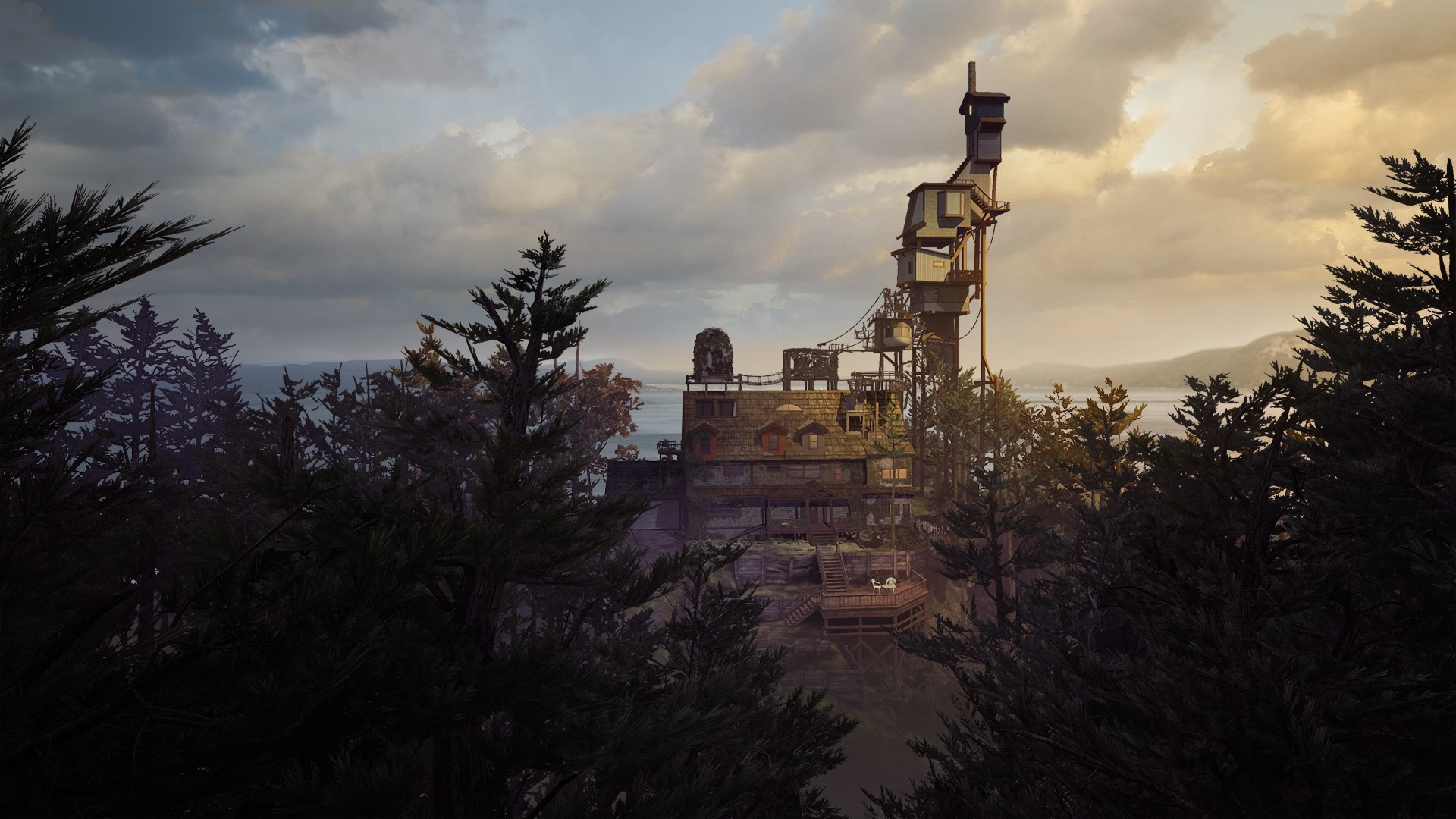What Remains of Edith Finch is a walking simulator video game designed by Giant Sparrow that I played on my Switch. The target audience is broad as it is a walking simulator, but the themes and color choices appeal to adults interested in mysteries; it is designed to be played by only one player.
Formal Elements
The procedure and rules of the game are initially unclear to the player, but by experimenting, players discover that they can walk in any direction the map has an open path, look around, and interact with any popup bubbles that appear. As the player walks around, there is a story being told at different rooms and milestones. Similarly, in order to progress through the game, the player must interact with and follow the only paths of the interaction bubbles, allowing the designer to control the story’s path.
The objective is to learn the story about the different family members on a family tree, playing as one character at a time.
Thus, the main mechanics of the game are walking and performing the interactions the game requires, such as following a bird or attacking a rabbit during the first character. Each character of the game is one loop, where players can see different environments, take on different actions, and notice different themes. Even within a character, more loops and arcs are revealed to tell the character’s story.
The house is the main setting of the game, but different characters move into different boundaries as their story requires. When an interaction requires a player to move to a different environment or become a different character, the game plops the player into the new setting and adjusts how the player moves (ie. when you become a monster, you slither rather than walk). The change in environments and characters changes the pace of the game and leaves players awaiting what will come next.

Types of Fun and Narrative Architecture
The mechanics of the game allow for the game’s core type of fun: discovery. Because the game is centered around figuring out what happened, where to go next, and what might happen when you interact with something, the intended type of fun is discovery. In order to progress, a player must continue to try new paths and find new interactions. One example of this was when first walking up to the house, I tried to enter the front door but learned that my key didn’t work. I tried a few different paths before finding a back door. I went to interact with the door, assuming that I would use my key to unlock it, but instead, I dove through the dog door to enter the house. The game is designed to surprise the players, taking unexpected routes through the environment and narrative story. It unfolds quickly, twisting the story and players expectations, leaving room for the fun of fantasy but primarily being driven by discovery, which also reflected the embedded narrative architecture that the game has.

Memorable Moments
The game was shocking to me – I didn’t really know what I was getting into! When I played the first character, I became squeamish as I transformed into different animals and monsters, chasing after and eating other creatures. The game slowly evolved, letting me get used to the idea. First, I became a cat that chased a bird, and the game simulated the eating. Later, I became an owl, and I had to figure out how to find and attack a rabbit. At this point, I was so uncomfortable with the idea of attacking the rabbit that I had to pause the game and Google if it was a horror game (which I am not a fan of). After getting comfort from the Internet, I continued and found myself more comfortable with the progression of the game. There was a big jump to get the first attack, but then it quickly became the norm.
Visual Design & Branding
The branding of the game is dark and creepy. The choice of a muted and bland color palette reflects the eeriness of the game, and the tropes of a big haunted mansion with bizarre rooms all added to the mysterious theme of the game. Players could easily understand the mood of the story by relying on classic genre ideas, thus attracting the target audience of those who like mysteries. Similarly, the name offers a question without much information, furthering the idea of the mystery and of discovery.
Improvements
To improve the game, I would offer more structure to players at the very beginning. I’m not a regular console player, and I was at first lost with what to do and with how to interact with the bubbles. I had to spend time clicking every button and trying different combinations to see what would happen. I got stuck at one point trying to open and turn the pages of a book in the game. While I recognize the designer likely made these choices to offer the notion of discovery in all realms, I can’t help but believe that discovering a basic button click is a core goal of the game. At a minimum, I would include a small guide on the menu of the game to allow for players to get help if needed. This would still allow for the discovery mechanic to be at the game’s core while offering a lifeline for newer players like myself.
Conclusion
What Remains of Edith Finch is a walking simulator game that utilizes an embedded narrative to allow players to discover and enact the stories of a cursed family and a haunted mansion. The game utilizes simple mechanics to require players to discover while structuring the game so players can only follow one narrative path. The success of the game lies in creating a mood of darkness and eeriness that erupts with shocks and surprises throughout the discovery of the story.



